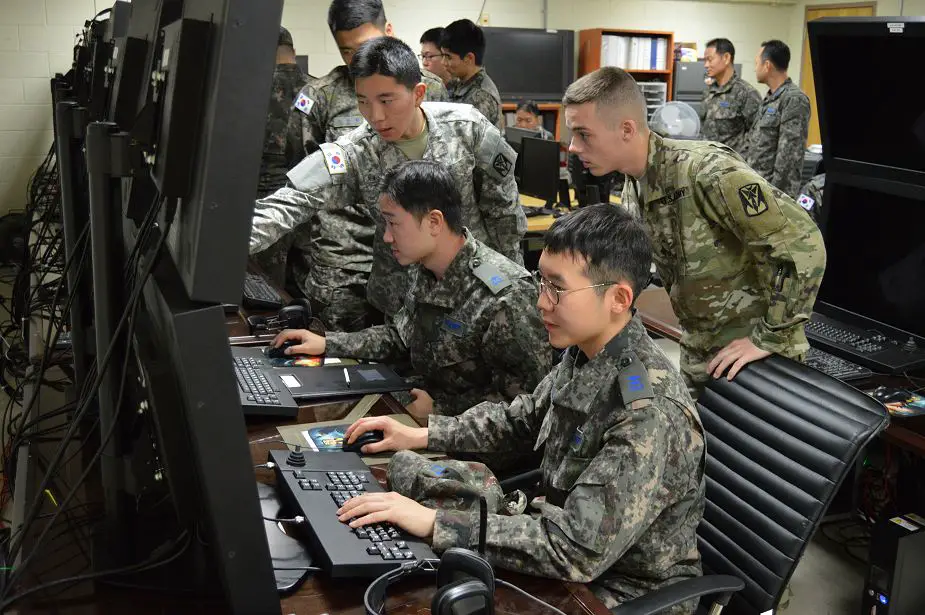U.S. soldiers assigned to 6th Battalion, 52nd Air Defense Artillery Regiment partnered with the Republic of Korea – Army 516 ADA Sept. 6-8 at the Darrakae training area, Pocheon, South Korea, for the first combined short range air defense training event on the Korean Peninsula.

Courtesy Photo | Korean Augmentee to the U.S. Army Cpl. Seungsu Nam, a human resources specialist and Pfc. Jacob Porter, a network switching system operator, assigned to Headquarters Battery, 6-52 Air Defense Artillery Battalion, work with Republic of Korea Air Force air and missile defenders from 177th ADA Battalion to respond to a simulated air battle during the unit’s combined interoperability exercise held Nov. 17-18, 2015, at Suwon Air Base.
The purpose of the exercise to was to integrate ROK and U.S. Army SHORAD elements in a field environment to gain familiarity with each other’s weapon systems and capabilities, with an end goal of building an enduring partnership between the two units.
The idea behind the training started in earnest with the 6-52 ADA Battalion Commander, Lt. Col. Marc Pelini, reaching out to the 516 ADA leadership to gauge interest. The idea of a combined training event was received in kind and planners on both ends immediately launched into action.
Lara reached out to one of the 516 ADA’s platoon leaders, 1st Lt. Seung Joo Kim, and they laid the foundation by scheduling a combined network communication exercise to ensure both units would be able to talk via radios in an arduous field environment.
The controlled communication exercise was critical to the success of the operation, according to Lara, and the lines of communication were seamless throughout their field training exercise. Furthermore, the two platoon leaders bridged the language gap by leveraging Korean Augmentees to the United States Army and translators with the 516th ADA, nullifying an identified obstacle.
While in the field, both units trained on their mission essential tasks of emplacing combined SHORAD assets to defend a critical location, deconflicting engagements of enemy aircraft based on sector of fire, and utilizing secondary means of targeting enemy aircraft when their primary weapon system becomes combat ineffective.
For U.S. Soldiers, this meant using the man-portable air-defense system, where two-Soldier teams are capable of eliminating low altitude cruise missiles, unmanned aerial systems and air breathing threats.
The ROK-Army simulated those targets by providing the oppositional force throughout the exercise, and tested the combined short range air defense with scout helicopters and a perimeter attack by ROK Special Forces.
The units are planning more combined training events to further expand their scope of understanding and strengthen their newly casted relationship. The next exercise will occur over the next few months and build on their recent successes, while also working to improve on areas identified during their after action review.















